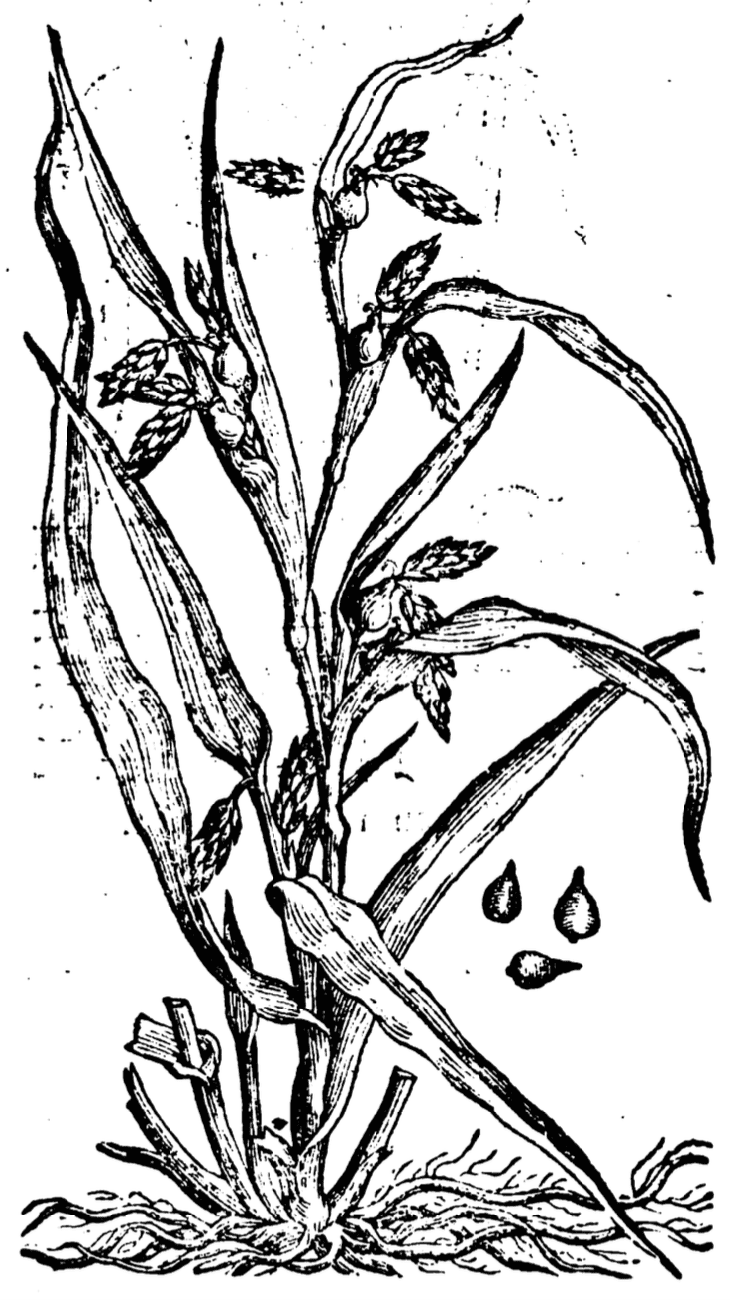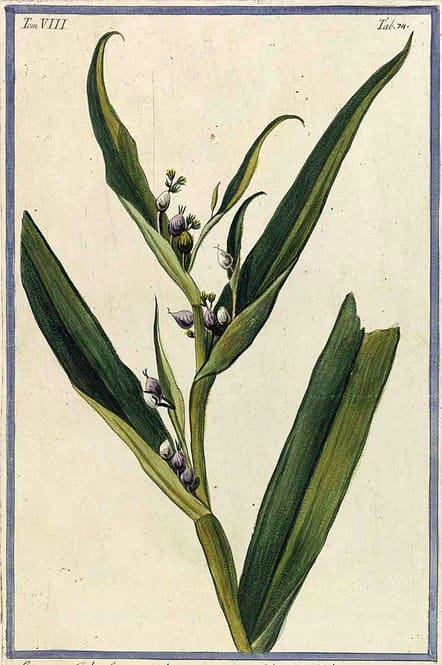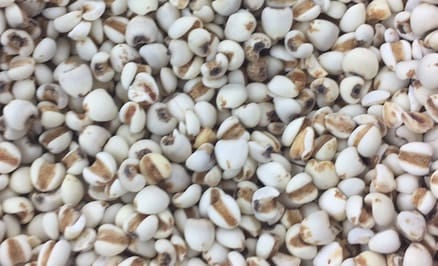Coix, Job’s Tear, Yi Yi Ren 薏苡仁
Lachryma JobiYi Yi Ren (TCM)
 Rariorum Plantarum Historia, Clusius, 1601
Rariorum Plantarum Historia, Clusius, 1601 Bonelli, Giorgio, Hortus Romanus juxta Systema Tournefortianum, 1783-1816
Bonelli, Giorgio, Hortus Romanus juxta Systema Tournefortianum, 1783-1816 Coix Yi Yi Ren
Coix Yi Yi RenBotanical name:
Coix lachryma;
Coix lachryma-jobi and Coix lacryma-jobi var. ma-yuen are official in TCM.
Parts used:
Seed
Temperature & Taste:
Cool, dry. Sweet, Bland
Classification:
C. Clear Damp, Promote Urine
Uses:
1. Clears Damp, Promotes Urine
-Edema, fluid retention, swelling of the legs
-Diarrhea from Damp
2. Clears Heat and Damp, Promotes Urine:
-painful or dribbling Urine from Damp-Heat obstruction
-it is suitable for any condition with Damp-Heat marked by poor digestion and a greasy tongue coat
3. Clears Wind-Damp, Opens Obstructions:
-painful swelling of the Joints; it can be used for Heat or Cold cases depending on the herbs its used with
-in TCM it is regarded as most effective for reducing tightness and spasms, and increasing joint mobility
4. Clears Heat and Toxin:
-acne, pustules, boils
-Abscesses of the Lungs or Intestines
Dose:
9–30 grams in decoction
Comment:
1. Job’s Tears is similar in nature and use to Barley, and has been called ‘Chinese Barley’.
2. Although gentle, and used as food, Job’s Tears has some special functions. It can clear Damp without damaging Yin. Secondly, it supports the Qi of the Stomach and Spleen without breeding Damp-Heat.
Preparation:
The most common preparation is dry-frying until yellowish. It is done either alone, or fried with bran in TCM. This preparation makes it less cool, more drying, and better to strengthen the Stomach and digestion; bran enhances this last effect. When stir-fried until scorched, it harmonizes the Stomach, clears Food Stagnation, and stops Diarrhea.
Main Combinations:
1. Edema and scanty Urine from Damp obstruction, Coix Yi Yi Ren with Adzuki bean; other herbs can be added including Water Plantain root (Ze Xie), Plantain seed, Talcum etc.
2. General for Damp, Coix Yi Yi Ren with Atractylodes Bai Zhu, Poria Fu Ling (as in Shen Ling Bai Zhu San). This can be used for Spleen deficiency with Dampness, and is used for Diarrhea from Spleen deficiency. Tangerine peel, fresh Ginger, Pinellia Ban Xia and others can be added as needed.
3. General for Damp-Heat, Coix Yi Yi Ren with Atractylodes Bai Zhu, Poria Fu Ling, Scutellaria Huang Qin. Others such as Coptis Huang Lian, Pinellia Ban Xia, Tangerine peel and Paeonia Bai Shao can be added as required.
4. Heavy, painful and swollen legs, Coix Yi Yi Ren with Chaenomelis Mu Gua.
5. Joint pain from Heat and Toxin (red, hot, swollen, painful joints), decoct Coix Yi Yi Ren with Sarsaparilla or China root.
6. Add Coix Yi Yi Ren to Rice congee for chronic joint disease; other herbs can be added as needed. See also Eight Treasure Congee
7. Acute Wind-Damp painful obstruction, Coix Yi Yi Ren with Almond kernel (Xing Ren), Ephedra (Ma Huang), and Licorice
8. Intestinal Abscess, Coix Yi Yi Ren with Paeonia Mu Dan Pi and Rhubarb
9. Lung Abscess, Coix Yi Yi Ren with Violet and Almond kernel
Cautions:
Generally very safe.
Main Preparations used:
Dry-fried Job’s Tears
-
Extra Info
-
History
|
‘The different species of Coix bear the Sanskrit names of Gavidhuka, Gavedhu, and Gavedhuka. They are mentioned in Vedic literature, and appear to have been one of the cereals which were cultivated by the Arians on the hill-slopes of the Himalayas. They are still cultivated by the hill-tribes in the Kbasia and Naga Hills and in Assam and Burma, where they arc known by tho vernacular names of Kasi, Kulese, Kalinsi, Kyoit, &c, and are used as a food-stuff. The wild form, common in the plains, is only used for medicinal purposes, and is considered to be strengthening and diuretic. The Arab travellers in the |
East became acquainted with the seeds and named them Darau Daud “David’s tears,” and afterwards Darau Aydb “Job’s tears.” Es-Saghani, who died about the year 1260, mentions them in the Obab as a well-known strengthening and diuretic medicine. The Arabs introduced the plant into the West, and it has become naturalized in Spain and Portugal, where it is still known as Lagrima de Job. European botanists have rather inappropriately given the name of Coix to this genus, Coix being the name of a kind of palm growing in Africa and mentioned by Theophrastus and Pliny. (Pharmacographia Indica, Dymock, 1893) |
